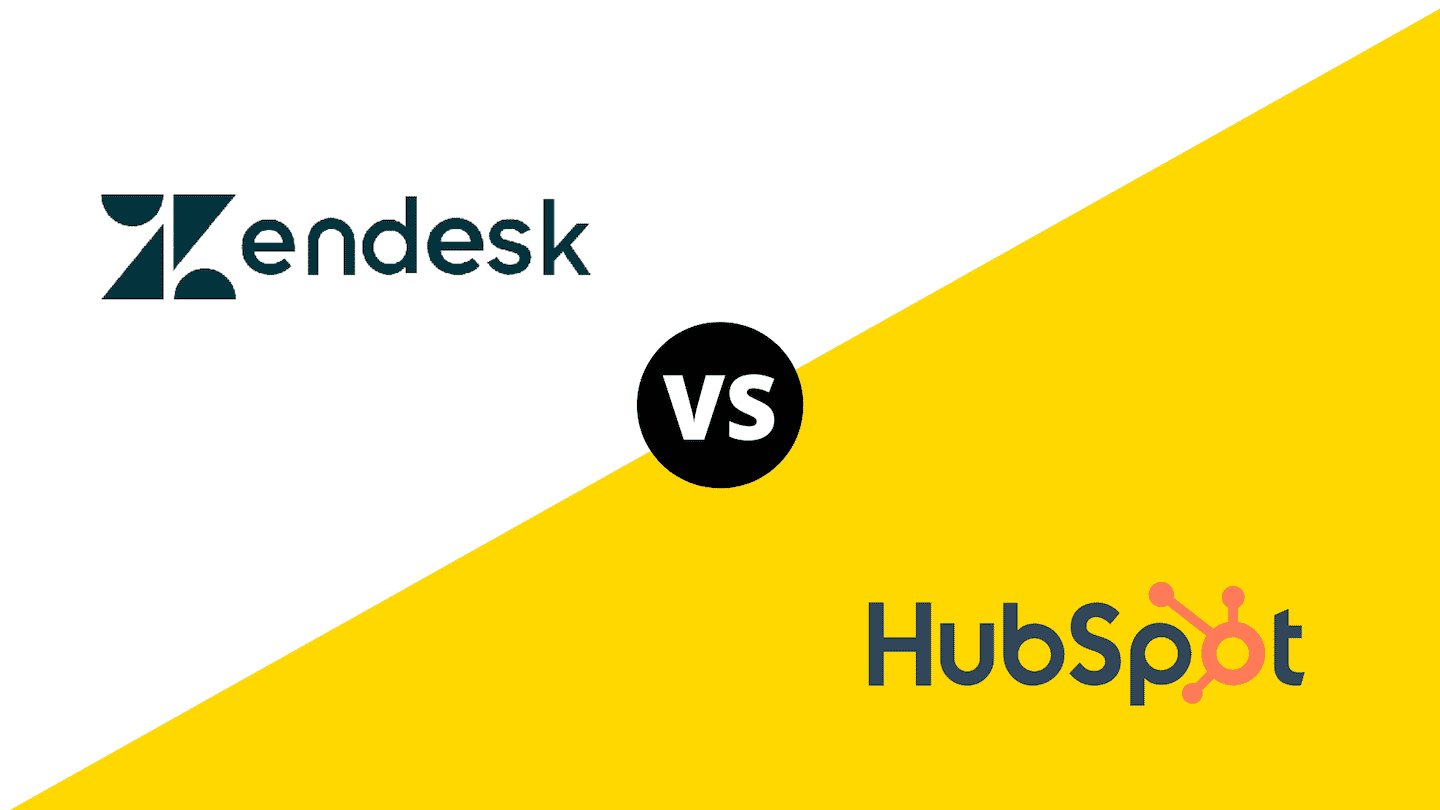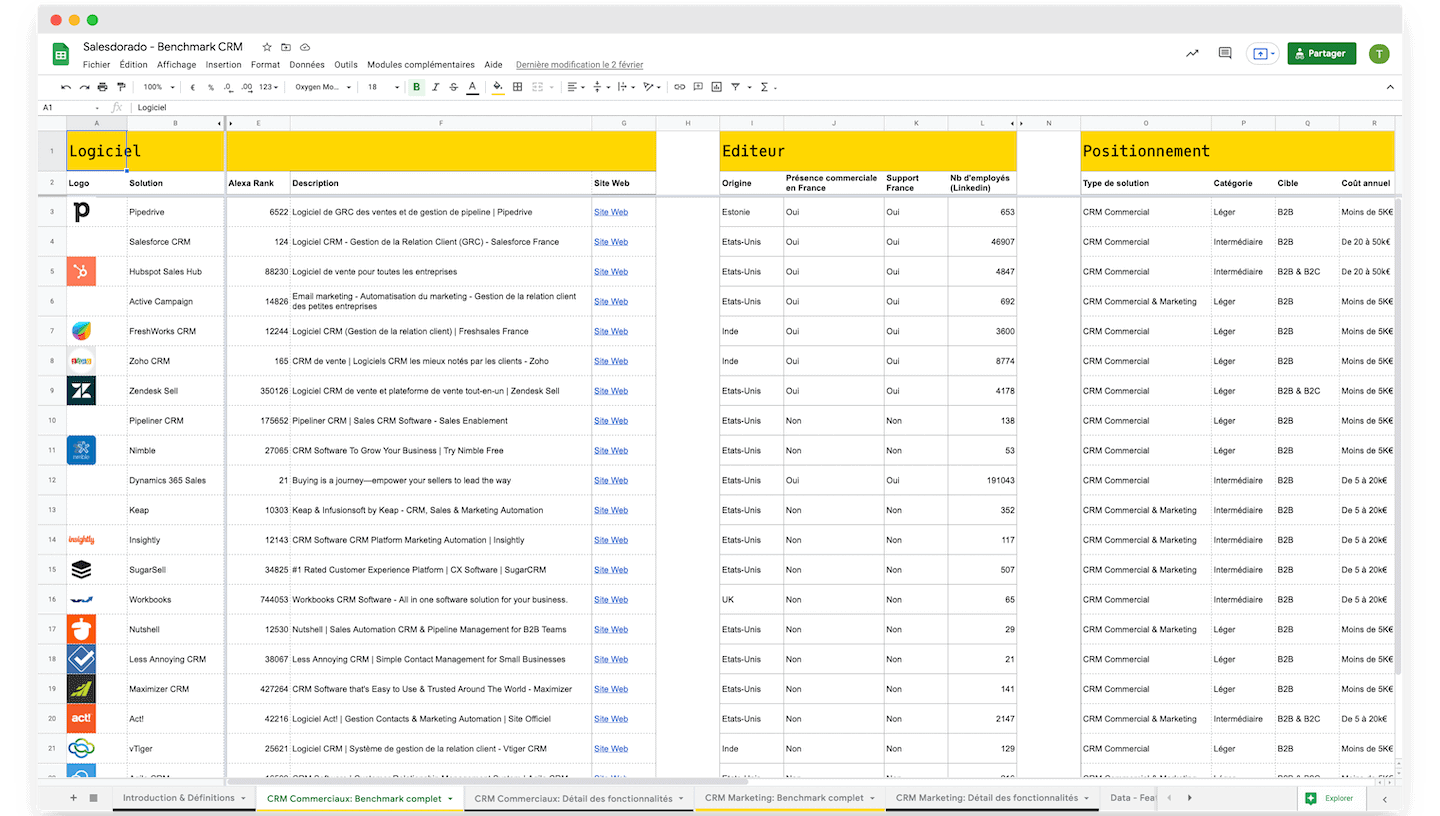Project management is at the heart of any organization, regardless of its size, industry or location. From a real estate construction project, to the organization of an event, to the development of a software program – if you don’t follow a rigorous management method, the expected results won’t follow.
There are several well-known methods today – many are familiar with “Agile teams” or the Kanban board. But it is still necessary to master them and choose the one(s) most adapted to your structure and project.
In this article, we look back at 10 essential project management methods, and we give you the keys to identify which one to adopt.
Sommaire
The 3 key approaches to project management: Waterfall, Agile or Lean
In project management, it is common to confuse approaches with the methodologies used to implement them.
If these debates are still discussed among academics, at Salesdorado we have chosen to split project management into 3 main approaches, which are then associated with different implementation methodologies.
Waterfall method: planning and predictability

This method is often associated with the most traditional way of conducting and managing a project.
- The principle: The project manager puts in place a transparent project plan that very precisely plans the steps to be followed, with a schedule and an allocation of resources to be respected. Each step is associated with a time frame, a technique for implementation and collaborators. The approach here is sequential, the steps follow each other, and never overlap (like a waterfall).
- When it’s powerful: This approach is most useful in areas where the expected end product has a very low probability of changing (e.g., in construction). It is ideal for very large projects with multiple stakeholders, to ensure that the multiplication of intermediate elements does not detract from the success of the project and the expected deliverables.
- Limitations: This method is not compatible with projects undergoing multiple changes and reorientations. Its very top-down method may not be suitable for structures with collaborative work habits. And in this framework, the customer relationship is reduced to a point of setting expectations upstream, and the delivery of the product/service – so there is little interaction.
The Agile method: collaboration and flexibility

The birth of the Agile method is closely linked to that of the software development sector. More precisely, the limits of the waterfall method in the face of the reality of software development.
- The principle: The idea of the Agile method is to take the opposite approach to waterfall project management. Here, the focus is on improving communication within the teams, to deliver faster and with better quality. We follow an iterative (cyclical) process that values the involvement of individuals in the constant (re)definition of the remaining steps to arrive at the expected final result. The expected end result itself is constantly evolving. We choose to put a button there, then we realize that it won’t work well with another button, and that we should put it there instead, etc.
- When it’s powerful: This is an ideal method for activities that are inherently unpredictable and where it is difficult to predict the full scope of the process in advance. The method is therefore often popular in the marketing, IT or events sectors.
- Limitations: It is a method that implies being in constant and close collaboration with all the stakeholders and that imposes abundant (and time-consuming) communication. On the other hand, agile implies a great deal of autonomy for all the people involved in the project. We are very far from the “Thinking / Executing” vision of the 20th century. It is fundamentally an elitist model that will not adapt to all organizations. Finally, the agile method is obviously very difficult to apply to contexts with high investments. You can’t really “iterate” on the construction of a plant: either you pour the concrete or you don’t, but you can’t do it halfway and change your mind or your approach.
The Lean method: optimization and monitoring of quality
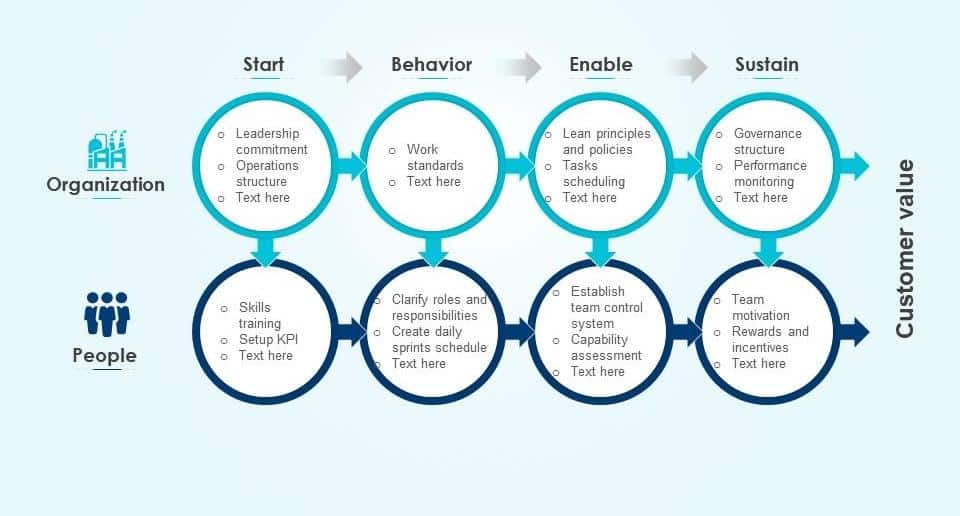
The Lean approach is derived from the world of industry. It was born out of the process of improving the production chain in Toyota factories in Japan in the 1950s, with a watchword: eliminate everything that does not directly generate value for the end customer.
- The principle: This approach is based on a precise and permanent control of the quality of the expected final product or service. The idea is to optimize the process to accomplish more with less effort. To do this, we seek to eliminate waste (of time or resources), irregularities in the process and the risk of overwork (of financial and human resources). The solutions found must then be sustained to ensure continuous improvement.
- When it’s powerful: This is an approach that is made for very large projects with already established processes that are unlikely to change. It is therefore naturally found in industry (product manufacturing plants), which follow an assembly line process and have a stake in the similarity of the finished products.
- Limitations: In fact, it is a method that corresponds rather to a certain sector of activity (the manufacture of identical products) and a particular organization (assembly line work or associated work mode).
Top 5 Waterfall Project Management Methodologies

#1 The classic waterfall: Simple and effective
This is the traditional Waterfall approach: the project is broken down into linear phases, and each phase must be completed to trigger the start of the next.
The most commonly used tool for this method is the Gantt chart. It allows a visualization of the whole project and the identification of the milestones (or key steps) that unlock the following phases.
Who is it for? Teams working in highly structured and predefined projects (construction sector or manufacturing plants).
#2 The Critical Path: Mapping for Complex Projects
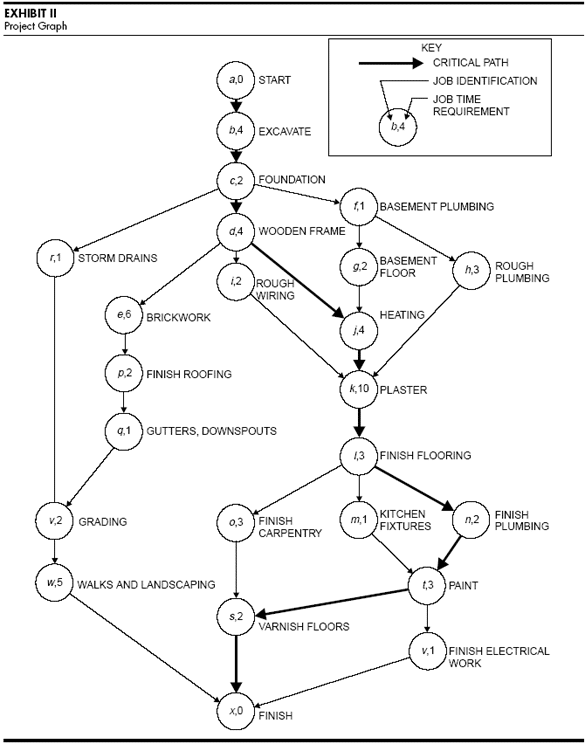
It is based on the model of the Waterfall approach and the interdependence of the project phases, but includes an additional subtlety.
The idea here is to sequence the project phases into tasks with associated intermediate deliverables. Each transition from one phase to another implies that these deliverables must be delivered within the time allowed to validate the key step.
For whom? Smaller teams, for whom the multiplication of intermediate deliverables does not pose organizational problems. Overall, it is a method for small to medium-sized projects.
#3 The Critical Chain: Detail for Efficiency
This method is closely related to the critical path method, but includes an additional level of detail.
The idea is that each task to be completed is associated with a deliverable (as in the critical path method), but also with a precise timing and an allocated budget. This method then allows you to accurately monitor the possible overspending of resources, and to better distribute the workload or to rebalance the budget.
Who is it for? Teams of any size that have important reporting needs to their hierarchy.
#4 The PERT method: Focus on impact
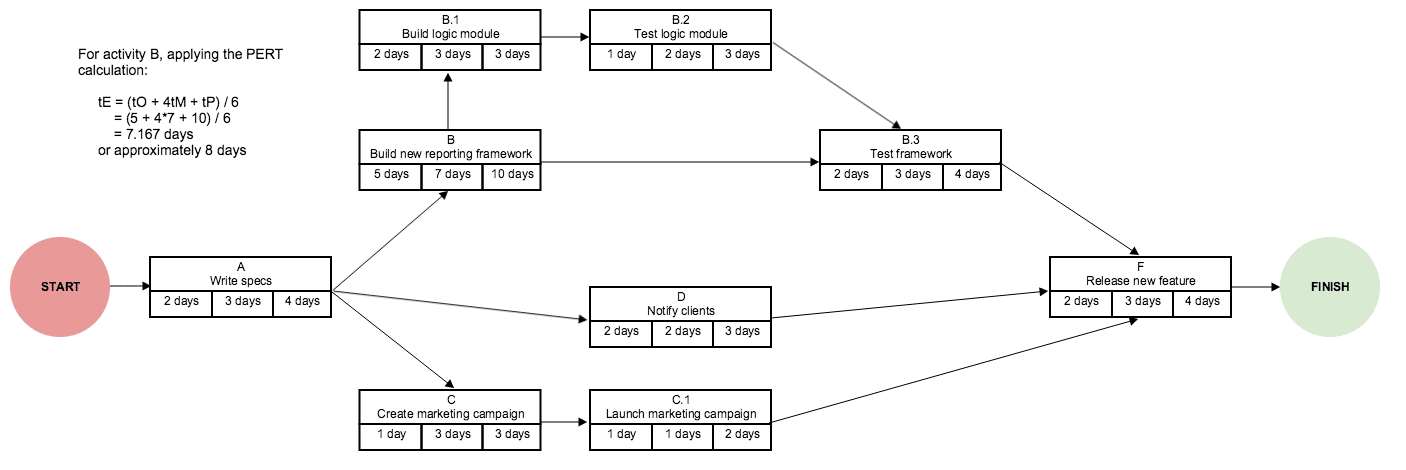
This method differs from the other methods presented in that it focuses on the medium and long-term impacts of the project’s success on its environment.
The idea is not to ask how to carry out the project, but rather how to carry out the necessary change of practices in an identified territory/community.
This is done by mapping the impacts upstream of the project (forecasting) and monitoring them against the results (reporting). The GANTT chart model can be used for this purpose.
For whom? Projects linked to desired societal transformations (international development, research sectors, etc.) and whose objectives are more behavioural changes than services rendered or products delivered.
Going further
Find our article on the best software for GANTT charts.
#5 PRINCE2: The British Government’s Derived Method
PRINCE2 stands for “PRojects IN Controlled Environments” and was developed by the British government for IT projects.
The idea is to divide a project into 7 stages: development, governance definition, initialization, progress control, deliverables management, timing management and project closure.
Who is it for? Large teams with multiple stakeholders, for whom the complexity and level of detail required is not risky in terms of resource management. In fact, it remains a very common method in the IT field.
Top 5 Agile project management methodologies

#1 Scrum: The ultimate implementation of the Agile approach
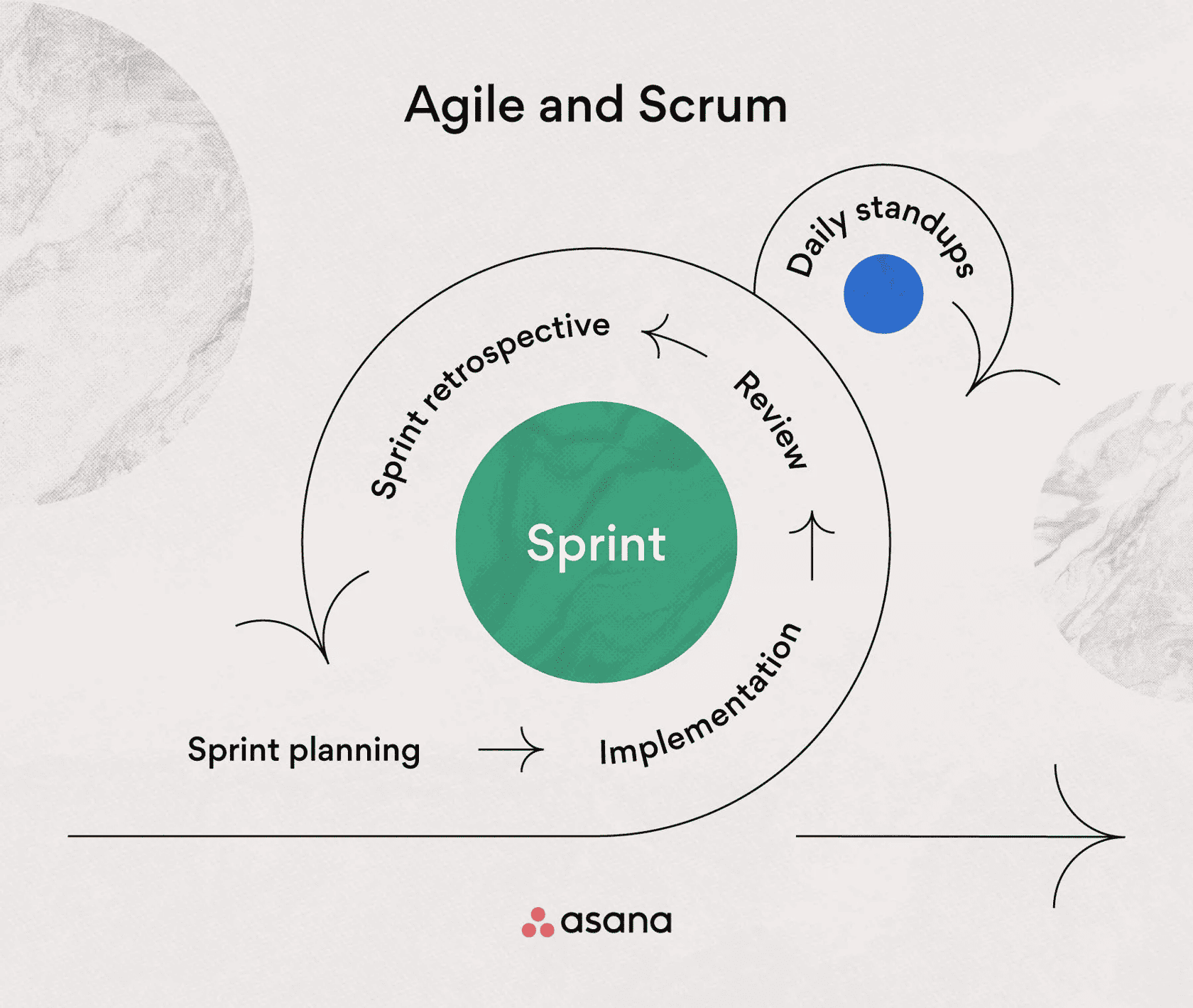
The idea is to split the project cycle into very short phases (called “sprints”), which last 1 to 2 weeks and involve a small number of stakeholders (10 people on average).
Each phase is composed of individual tasks that are not dependent on each other and therefore allow for concurrent progress (unlike the Waterfall approach).
To work well, the project must be led by a person in charge of making sure that all the collaborators are communicating, through regular meetings and progress updates.
Who is it for? Organizations that choose an Agile approach, regardless of their size.
#2 Kanban: Visualization first

Unlike the Scrum method, Kanban is not precisely defined in its content, and can therefore be implemented differently depending on the structure.
Most often, this takes the form of a Kanban board, which is divided into columns (your work steps) and cards (your work items). First, you need to identify all the steps to get to a deliverable. Once the task is completed, you move the card to the next column.
To work well, you must not clutter up the columns with too many tasks (flow management) and ensure continuous improvement in the pace of completion by setting up regular progress reviews with the project team.
Who is it for? All teams, especially those who work remotely. The emphasis on visualization allows everyone to stay on track without too much difficulty.
The Kanban method has been widely democratized thanks to Trello, a simple and lightweight kanban tool designed by Atlassian, an Australian software company that has always operated in 100% remote mode.
#3 Xtreme Programming: A formidable efficiency, but use sparingly
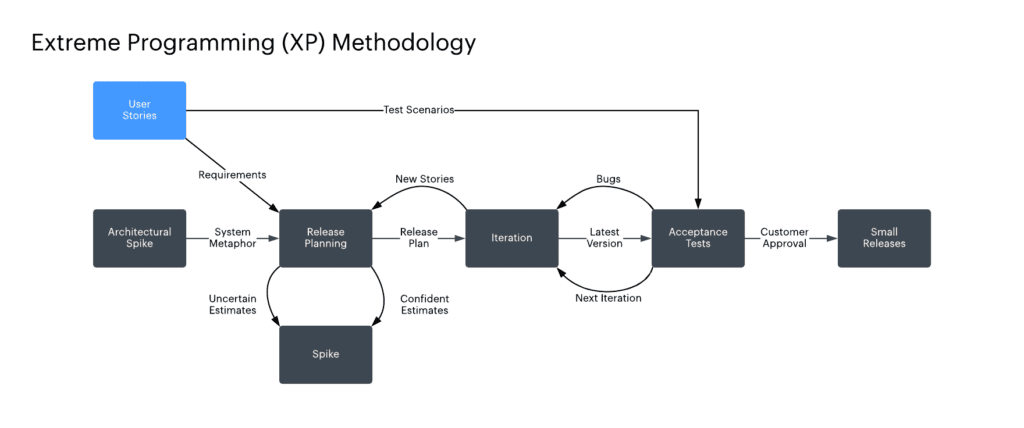
This method was developed for fast-paced projects with very tight deadlines. In reality, it is only used in the software development sector.
This method is based on 5 values that underlie its effectiveness:
- communication, which must be adapted according to the subject and the people involved
- simplicity, which must be a permanent objective in order not to overtax the teams, nor waste time or financial resources
- constant feedback between teams to improve
- Courage, in particular to raise possible problems in the management of the project and to solve them as soon as possible
- respect between the members of the project team
Who is it for? Software developers with small staffs and tight deadlines.
Going further
It is recommended that you go through the Xtreme Programming rules by Don Wells to better understand the method.
#4 Scrumban: Hybridity for performance
This hybrid method is inspired by both the Scrum method and the Kanban method.
The idea is to have both the very short project phases (sprints) of the Scrum method, while going into the detail of the individual tasks to be done (Kanban). All this with a simple and quickly understandable visualization of the project plan, with a system of cards and columns.
Here again, as with any Agile approach, regular and efficient communication between collaborators is required.
Who is it for? Those who are seduced by the Agile approach, and who want to find the right balance between simplicity of the process (Scrum) and clarity of task details (Kanban).
#5 Adaptive project framework (APF): Unbeatable adaptability
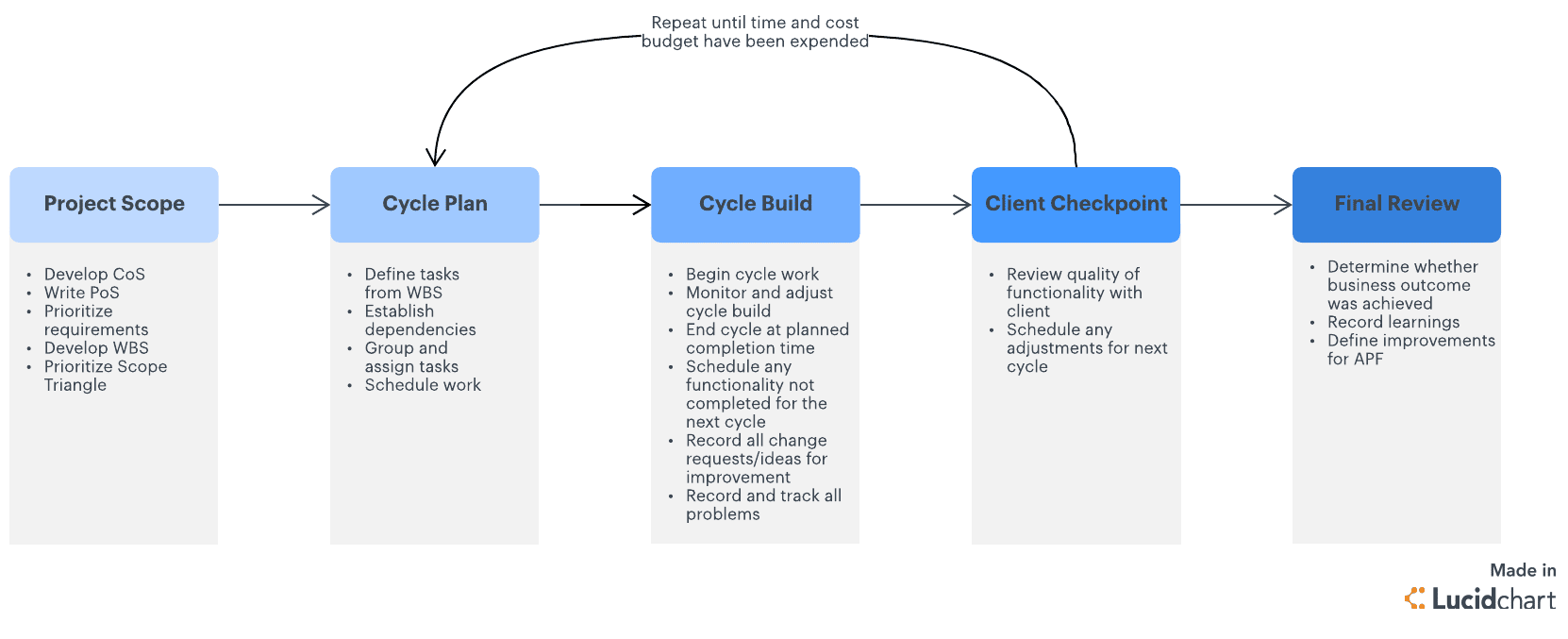
This method emphasizes the ability to react quickly and effectively to any changes that may occur during the course of a project.
It implies devoting an important part of the project management to the anticipation of possible risks and changes. By devoting a significant amount of time upstream and re-evaluating the project plan (and even its objectives), what is unpredictable becomes predictable and is dealt with quickly and efficiently.
Who is it for? Agile teams that have a very good habit of collaboration and a clear vision of their objectives, and for whom a quasi-permanent modification of the project plan does not represent a burden.
Six Sigma: The methodology for applying Lean management in project management
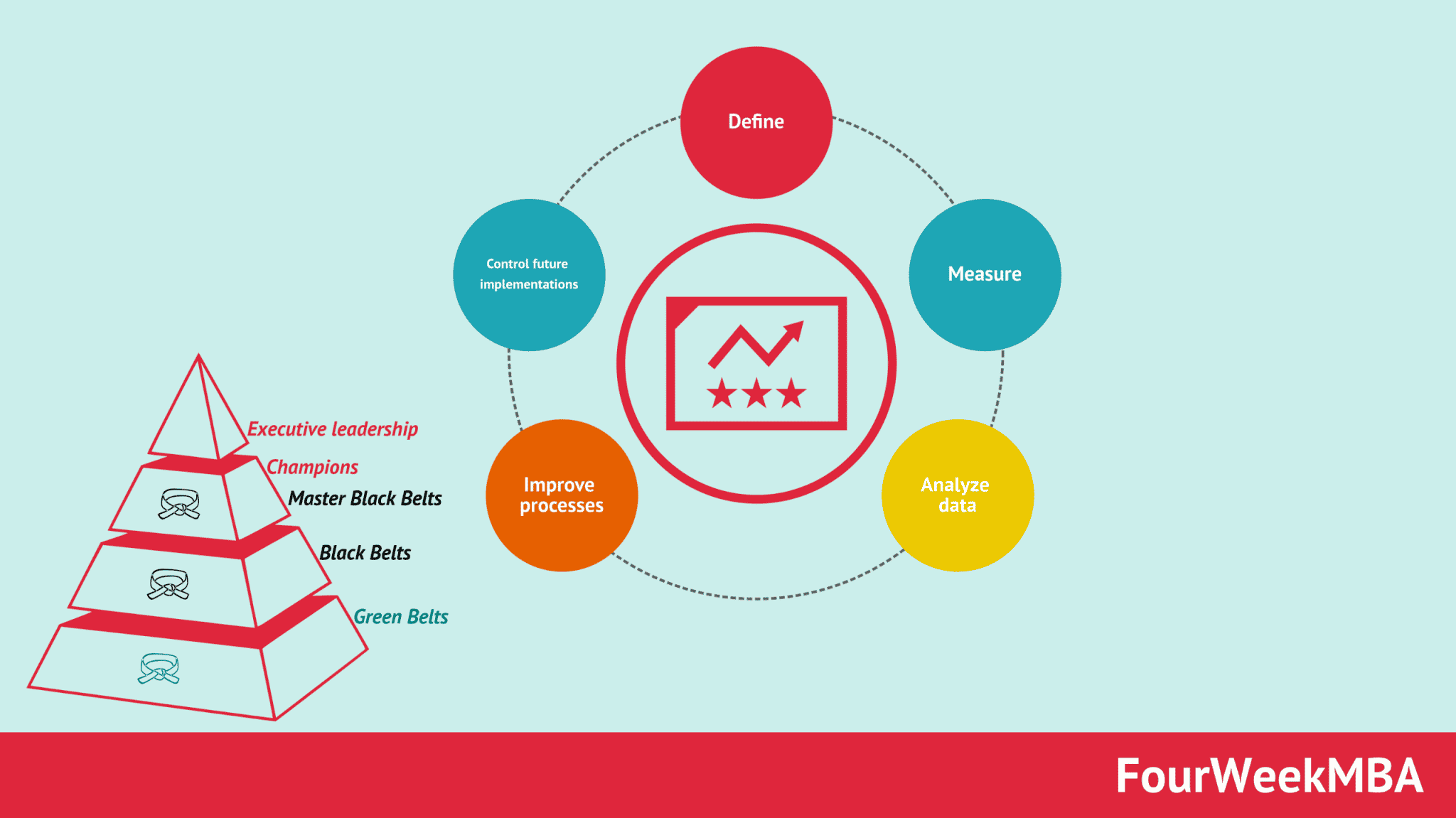
The SIx Sigma method is the variation of the Lean approach in project management. Its basic idea is to aim at a permanent improvement of the process and to eliminate any form of irregularities or waste of resources.
To implement it, it is common to use the “DMAIC” method, which is broken down into several phases: definition of the scope of the project, measurement of the data collected along the way, analysis of the causes of the problems identified, improvement based on the analysis, and monitoring of the sustainability of the improvement.
For whom? Project teams that have sufficient resources to outsource the analysis of irregularities and recommendations for improvement. It is particularly suitable for large teams that have similar projects in their conduct and final objectives.
To put things in perspective, we found this interview with Steve Jobs who talks about lean management, and in particular about the mechanisms to ensure a certain level of quality. We’re not really groupies, but when someone summarizes in 3 minutes hundreds of Linkedin posts that barely touch the surface of the subject, it deserves a word.

